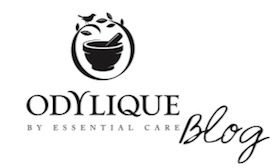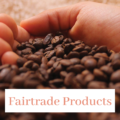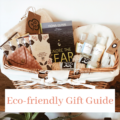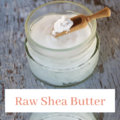
Most of us have probably bought fair trade products before – whether it be a banana or a bar of chocolate. But what does that blue/green/black symbol (Fairtrade mark) actually mean and why should we seek it out? And what on earth has it got to do with cosmetic products?
Read on for answers to these questions and more…
What Does Fairtrade Mean?
 Across most western countries, farmers and workers are protected by laws that give some kind of minimum wage and protective rights. But in many African, Latin and South American and Asian countries that safety net doesn’t exist. Hence why the Fairtrade movement began, and now extends to 74 countries covering over 1.65million farmers and workers.
Across most western countries, farmers and workers are protected by laws that give some kind of minimum wage and protective rights. But in many African, Latin and South American and Asian countries that safety net doesn’t exist. Hence why the Fairtrade movement began, and now extends to 74 countries covering over 1.65million farmers and workers.
Broadly, Fairtrade brings 3 benefits:
- A fair price paid for crops – the ‘Fairtrade Minimum’ that is above the cost of production and is the price that farmers receive if the market price drops below the Fairtrade Minimum
- Decent working conditions and no illegal child labour
- A Fairtrade premium – additional cash that can be used for infrastructure or community projects
At its heart, Fairtrade is about sustainability, which is of course high on our list of values too. We want to produce the most ethical cosmetics we can – that’s why they’re organic and cruelty free! But from the outset, we’ve been using Fairtrade ingredients like shea butter and sugar wherever they exist too.
By choosing fair trade products, we don’t just avoid the cycle of exploitation, but – because of the Fairtrade standards – companies, famers and employees from low income countries are protected and empowered to run sustainable businesses, without having to hand over their independence!
Is There A Difference Between ‘fair trade’ & ‘Fairtade’?
Buyers Beware! It’s not a choice of spelling; there is an important difference between Fairtrade (with a capital F) and fair trade (lower case). The capital F, plus the Fairtrade mark on a product means there is independent certification to the official Fairtrade standards of Fairtrade International and its licensing partner (FLOCert). There are a number of Fairtrade International member organisations who are allowed to award this mark; for example, the Fairtrade Foundation in the UK, or Max Havelaar in other European countries.
Products called fair trade (lower case) or fairly traded may use ingredients bought at a ‘fair’ price or without worker exploitation. But unless you see a Fairtrade Mark (or the Fair for Life logo – see below) this is the brand’s own assessment of fairness, not a neutral / third party standard. The Fairtrade premium (described above) will also only apply to products bearing the Fairtrade mark.
Keep in mind that not all goods cannot be certified by the Fairtrade Foundation, so it’s not possible to purchase everything with official Fairtrade certification.
Fair trade self-assessment is becoming more common: One of the original fairtrade pioneers, Cadburys, has since its takeover by Mondelez / Kraft, stopped using official Fairtrade certified cocoa beans and has self-styled its own certification.
Fairtrade – Where Does The Money Go?

‘Fairtrade standards comprise both minimum social, economic and environmental requirements, which producers must meet to be certified, plus progress requirements that encourage the continuous improvement of develop farmers’ organisations or the situation of estate workers’ – Fairtrade Foundation
Fairtrade certification ensures that farmers are paid a decent wage and work in a sustainable way, in sustainable, healthy conditions.
But with the Fairtrade premium – the additional money given to communities and workers under the Fairtrade scheme – farmers and workers themselves get to decide how it is spent. Typically, workers on plantations invest over 60% of the Fairtrade Premium in their own education, housing and healthcare, which helps to cope with rising living costs. Then around 20% of the Premium is spent on community projects such as schools. Fairtrade premium receipts average out at around 70 euro per worker per year. In 2016, Fairtrade premiums (from sales of cosmetic products?) rose to £32.3 million.
An example of Fairtrade at work is from the sugar used in our products. Firstly, it is bought from an ‘Azucarera’ or sugar plant in Paraguay at a fair price. The sugar plant receives a Fairtrade ‘premium’ to invest in community projects – the sugar plant funds the education of hundreds of children in the town’s High School. With the Fairtrade and organic certification, the farms have also been able to safeguard the traditional, organic methods of agriculture that have been inherited from ancestors, rather than turn to intensive agriculture in which the sugar cane is burned. They say this has made a substantial difference to biodiversity in the area compared to other sugar-growing regions in Paraguay. Read here about our Fairtrade shea butter.
A portion of the money spent of Fairtrade products is invested a little closer to home to help educate and raise awareness to the public through towns, schools and government lobbying about the consequences of buying goods that have and haven’t been fairly traded.
What Are The Fairtrade Standards For Cosmetics?
 Traditionally Fairtrade has been associated with tea, coffee and bananas. In 2009 standards were introduced for cosmetic products too. To qualify for certification all ingredients in a product that can be certified Fairtrade, must be sourced from Fairtrade farmers and producers under Fairtrade terms. For cosmetics, the actual mandatory minimum Fairtrade content is quite low – 2% in wash products like shampoo and 5% in ‘leave on’ products. That’s really a reflection of how few suitable cosmetic ingredients are available as fair trade – bananas and coffee aren’t that well suited to most skin care formulations! (The most common cosmetic ingredients and the ones we use are shea butter, cocoa butter, sugar and coconut oil.)
Traditionally Fairtrade has been associated with tea, coffee and bananas. In 2009 standards were introduced for cosmetic products too. To qualify for certification all ingredients in a product that can be certified Fairtrade, must be sourced from Fairtrade farmers and producers under Fairtrade terms. For cosmetics, the actual mandatory minimum Fairtrade content is quite low – 2% in wash products like shampoo and 5% in ‘leave on’ products. That’s really a reflection of how few suitable cosmetic ingredients are available as fair trade – bananas and coffee aren’t that well suited to most skin care formulations! (The most common cosmetic ingredients and the ones we use are shea butter, cocoa butter, sugar and coconut oil.)
There’s currently a limited perception of what ‘Fairtrade’ represents. We were once involved in a conversation with a new ethical certification scheme (that will remain nameless). “Join us,” they said, “you’ve got organic certification that means your ingredients are grown cleanly, Fairtrade which means you don’t use child labour… but our label means so much more.”… But Fairtrade is about much more than stopping child labour!
It of course means fair conditions for workers (and no little ones involved), but the central tenet of Fairtrade is about making sure farmers receive a fair and stable price for what they grow, one that is usually far above the world market price.
How We Got Into Fairtrade Beauty
We have always taken a huge interest in the provenance of our ingredients. Our formulator Margaret works closely with our suppliers on each new batch of oils, butters and extracts we buy, ensuring the therapeutic properties are as good as they can be. For that reason we came to know a lot about our growers and understand their needs, including those in the developing world.
Trading ethically is thus very important to us. As is third party verification of that ethical status: Just as organic had become a bit of an overused – and often unsubstantiated – way of marketing skincare, the same was starting to happen with fair trade.
So we were really happy when the Fairtrade Foundation introduced certification for cosmetics and we were proud to become the first UK company to launch skin care certified to both organic and Fairtrade standards. Now whenever possible (i.e. when the ingredients are relevant) if we’re repackaging or launching a product, we certify it to Fairtrade standards, along with our Organic Lipsticks, Eyeliners, Coconut Candy Scrub, Maca Mask and Natural Sunscreen.
 |
 |
 |
 |
 |
| Organic Lipsticks | Eyeliners | Coconut Candy Scrub | Maca Mask | Natural Sunscreen. |
| “This is a wonderful lipstick, it glides on smoothly and leaves you lips soft” | “Gentle to use. Doesn’t irritate. It stays on all day. No more Panda eyes for me!” |
“This is absolutely dreamy to use. Smells delicious and has a lovely texture – firm but gentle” | “I love the clean fresh feeling skin after using the mask.” | “This sunscreen keeps my skin safe and moisturised. It’s easy to apply and has a luxury feel to it” |
What Is Involved In Producing Fairtrade Products?
Not only do we pay Fairtrade prices, use Fairtrade ingredients, and approve the formulations and packaging designs with the Fairtrade Foundation. Another purpose of being a Fairtrade licensee is to add value and provide other benefits for Fairtrade farmers. For us this has been helping with market information and research, as well as promoting awareness of the farmers, cooperatives and producer groups.
This added requirement really appealed to Odylique director Abi Weeds:
“following my own first hand encounter with how Fairtrade helps farmers began on holiday in 2005. I visited a coffee plantation in Panama that supplied Starbucks with Fairtrade and organic coffee. Now they could have wheeled out the happy, healthy looking workers especially for the tour, but I didn’t get that feeling. There was a stark contrast with other farms I hiked past where the workers clearly looked undernourished, not to mention probably sick from the noxious pesticides emanating from the spray guns in their backpacks. The whole set up matched our brand ideals fully. Beauty is about far more to us then just pretty packaging (although we love that too). It has to be beautiful for you, the planet and those that help its creation – anything else is less then pretty in our eyes.”
Another perception is that a beauty product made to ethical standards cannot match the look or payoff of the big commercial brands. We love make up, and so do many of the people who have tried it – one blogger (We Were Raised By Wolves) likened our Praline Lipstick to MAC, which is more than high praise anyone who loves cosmetics as much we do!
Why Aren’t All Of Our Products Fairtrade?
Mindful of our commitment to sustainability and the need to minimise our carbon footprint, we try to strike a balance through our relationship with growers, by sourcing locally where possible and through fair trade organisations when we need to buy outside the UK and Europe. To achieve the Fairtrade mark for our products that contain olive oil, we would need to switch from our current source (a family-run cooperative in Spain) to a more distant Fairtrade olive oil. This would be to the detriment of our lovely Spanish suppliers and would also increase our carbon footprint.
In addition there are other fair trade certifications – Fair for Life – for example (that certifies our gorgeous coconut oil, which are excellent certifications, but are not recognised by the Fairtrade Foundation. We are keen for the Fairtrade Foundation to change the policy and instead to recognise other fair trade certifying bodies (as organic certifiers do). This would benefit producers by enabling more composite products (like cosmetics) to be certified.
So it may seem remote, but what you choose to put on your body really does make a difference. It’s not just more beneficial to you, but to a whole community and the environment. We hope that’s pretty fair. Check out our favourite fair trade products here.
You can also get involved in Fairtrade via the Fairtrade Foundation (whose website is also the source of data in this article).
Want To Try Our Products?
We only source the kindest ingredients from trusted suppliers who don’t practice unethical or cruel methods of farming, which is why we are able to label every single one of our products cruelty free!
Use code: UseFairtrade20 at the checkout for 20% off your order! – *Limited to one use per customer*
Shop Now
What is Dandruff? How To Beat A Flaky Scalp Naturally.

You take care of your hair; you wash it regularly,…




